I have been to Jordan three times and had the opportunity to go to Petra once, in the winter that sank Amman (the capital of Jordan) with knee-high snow a few years ago. The journey from Amman to Petra became very difficult because of the lack of transportation. Fortunately for me and some traveler friends from several countries managed to "lobby" with a "terminal lord" at the North Amman bus terminal, so he sent one of the Amman-Petra bus drivers to enter that day.
The bus, which was just trying to transport us, was filled with local people. We don't have a problem for that because the bus will be empty if only the seven of us are passengers, myself and my Irish road mate named Eouin and 5 travelers from various countries. Although thankful for getting the bus in such a difficult time, we were a little annoyed because the driver "robbed us by raising the price of 10 dinnars ($ 17) from the normal price.
Around 4 pm, our bus arrived at Wadi Musa, a city which is only about 2 km from Petra. In this city we parted, me and Eouin staying at the Valentina Inn and the other five staying at another inn. We were not wrong to choose the inn because Valentina Inn which is owned by an Italian woman named Valentina and her husband who is originally from Jordan is a very friendly inn. Eouin and I really enjoyed our night together there. In addition, we also met with high-class travelers like Jean Paul who became a journalist for a magazine in Luxembourg and Roberto, an Italian adventurer.
The next day, Eouin and I got up early to catch up with free transportation from "Valentina" which every morning at 6am took the residents of the inn to Petra. The freezing winter made a traveler staying at "Valetina" choose to curl up under the blanket so only Eouin and I used the free transportation that day. Arriving at Petra, Eouin and I had a chance to argue a little about the entrance ticket we were going to buy. The entrance ticket is quite expensive for 200 dollars for a 1 day ticket, whereas for 2 days it costs $ 300. After considering that we only bought tickets for 1 day because we believe we can complete all the tracks in Petra in one day.
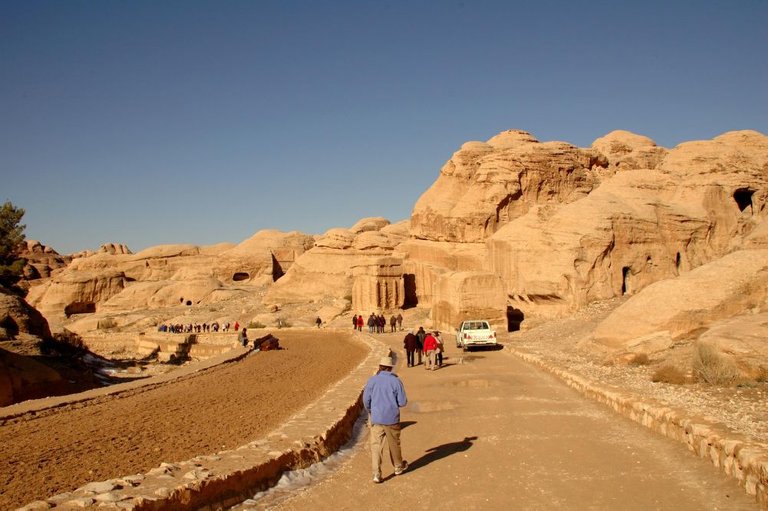
Before proceeding with the story of my journey, I want to tell you a little about the history of Petra, which was first inhabited by Nabataean people. Although a fan of ancient history, I did not know much about this tribe and only heard it when I was near a group of tourists who were guided by a tour guide. In essence, the city was built around the 6th century BC by the Nabataean people, one of the tribes that inhabited ancient Jordan. They controlled the trade routes in this desert region after the Kingdom of Israel and the ancient Judeans rulers of this region were previously defeated by the Babylonian kingdom led by King Nebudkadnezer. Long story short, the Nabataean people managed to make Petra one of the trade centers in this desert region until finally conquered by the Romans in the early centuries of the 2nd century AD. The city of Petra suffered a setback in Roman times because trade was mostly carried out by sea. The combination of economic setbacks and devastating quarters that destroyed the water supply system to Petra made the city abandoned by its inhabitants.
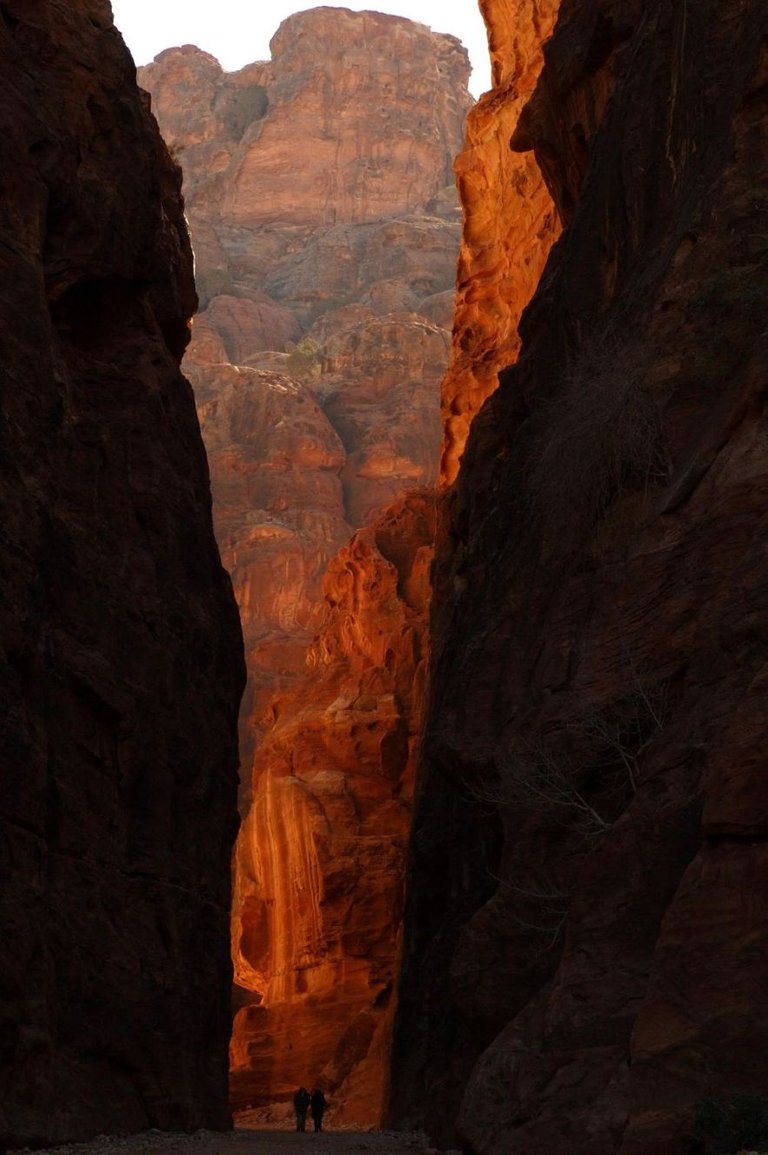
One interesting thing about Petra is the entrance to this city which has to go through a narrow gap between the stone walls which in Arabic is called Al-Sig. This gap is formed by geological processes. Along this gap there are waterways created by Nabataea thousands of years ago to guarantee water supply to Petra. The Nabataean people were very advanced in their time.
After about 45 minutes of travel through "Al Siq", we also arrived at the most famous building in Petra, namely "Al Khazneh" or in English called "The Treasury". Al-Khazneh is a building carved directly from a stone wall so there is no need for other structures to support it. This building is very famous after being the location for filming the film "Indiana Jones and The Last Crusade". Around Al-Khazneh, camels to sado and souvenir sellers scattered everywhere. This area is already very touristic because the trips are carried out by tourists guided by tour operators only up to here. This place is naturally a sudden market. Eouin and I chose not to linger here and resumed walking down the streets of Petra.
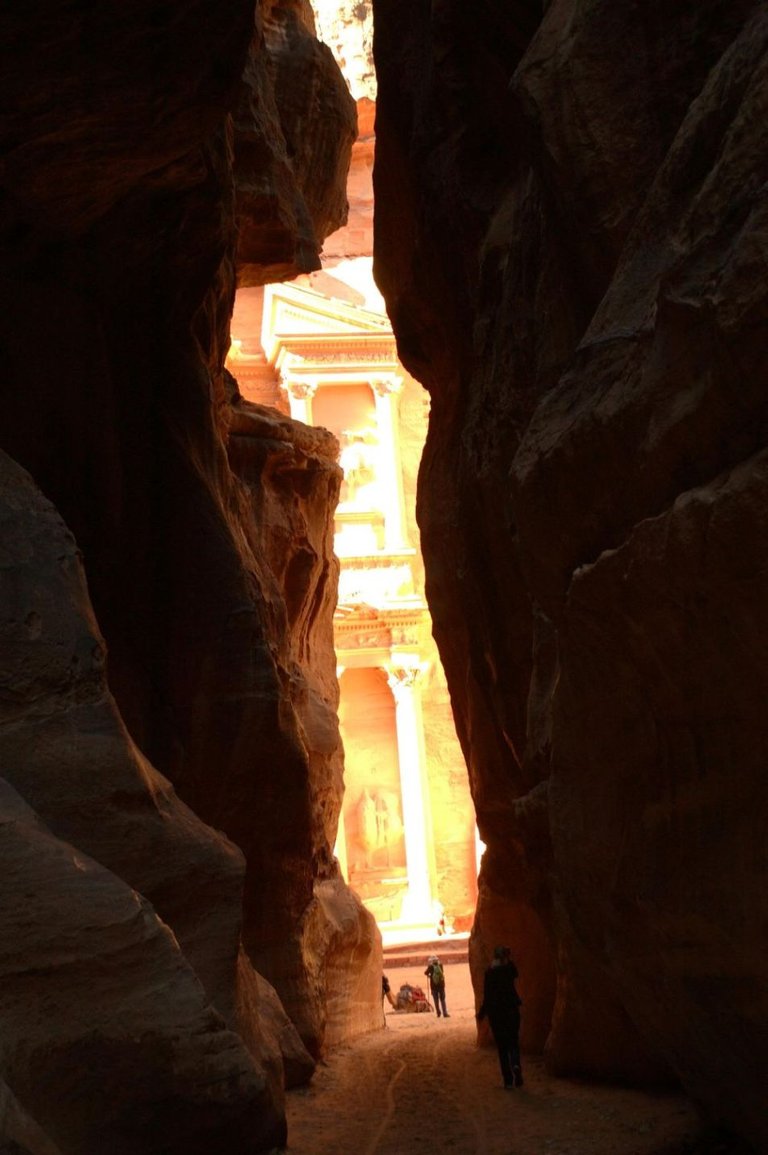
There is one characteristic that I see most often if a city or country has been ruled by the Roman Empire, namely the existence of a theater. The location of the theater in Petra is not far from Al Khazneh. Like other buildings in Petra, this Roman theater was carved directly from a stone wall.

The most common sight in Petra is the ancient graves (Tomb) which are also carved directly from stone. One of the famous ancient graves here is the Royal Tomb. This grave is called the Royal Tomb because of its shape that is bigger and more majestic than the other ancient graves in Petra. Strangely, until now no one knows for sure who the Royal Tomb was made. Some tourist guides I heard told the tourists he guided said the Royal Tomb was made for the nobility and the rich people of Nabataea. Hm, the tourists just nodded their heads in confessing the guide ... :-p. Besides the Royal Tomb, the Urn Tomb is another ancient grave that is most often visited by tourists.
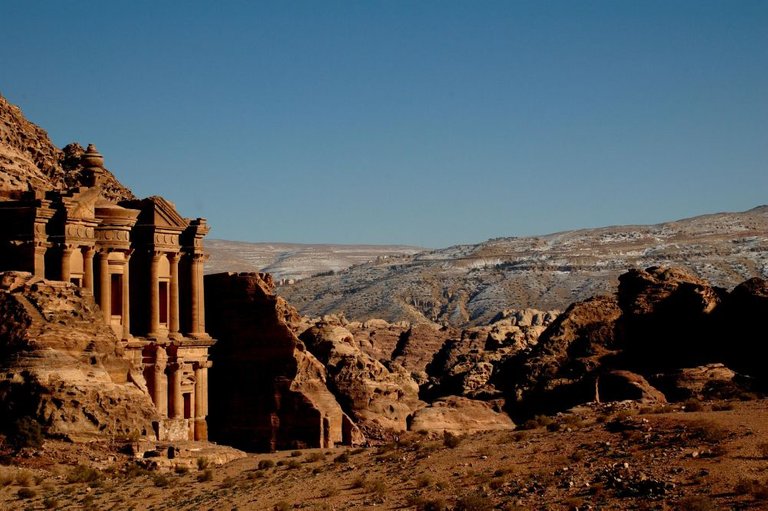
Our feet finally took us to the gate of the Ancient Petra city called "The Hadrien Gate". Behind the gate is the trade pulse of the ancient city of Petra pulsating. Not far from "The Hadrien Gate", there is a worship temple called "The Great Temple of Petra". Looking at its size, I can imagine that this temple must have been very magnificent. Roman influence is felt in this region, seen from the construction of a typical North-South Roman road (Cardo Maximus) that leads to "The Hadrein Gate". The North-South Road was indeed always built by the Romans in the cities and also their military camps.
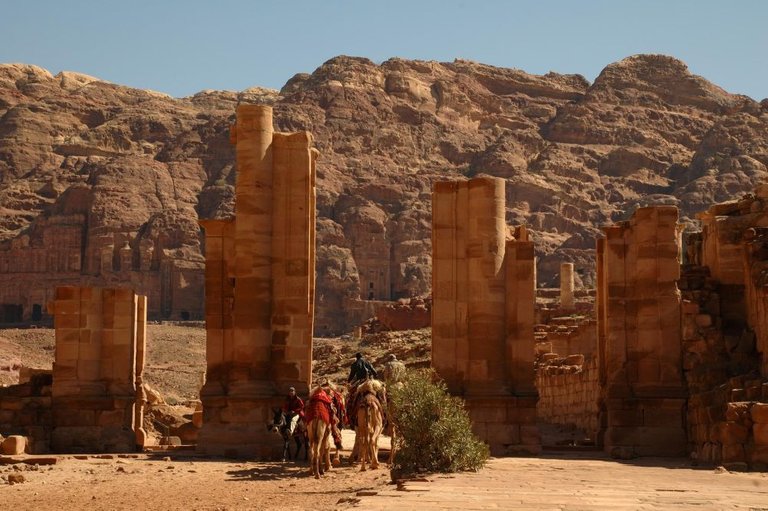
Before Petra was occupied by the Muslims, this place was also once controlled by Crusaders (Christian warriors of the crusade). They even had time to build a fort on the top of a hill. Eouin and I agreed to climb up the hill and see the atmosphere of the fort built by the Crusaders. This fort is nothing more than rubble. Petra area after Al Khazneh can be seen clearly from this fort. Surely the soldiers who were in this fort were free to detect enemies who were trying to attack the fort. Half an hour we were on the fort while enjoying the breeze. Eouin and I went back down to enjoy lunch at a restaurant just below the fortress. On the way down, we met Roberto who was on his way up.
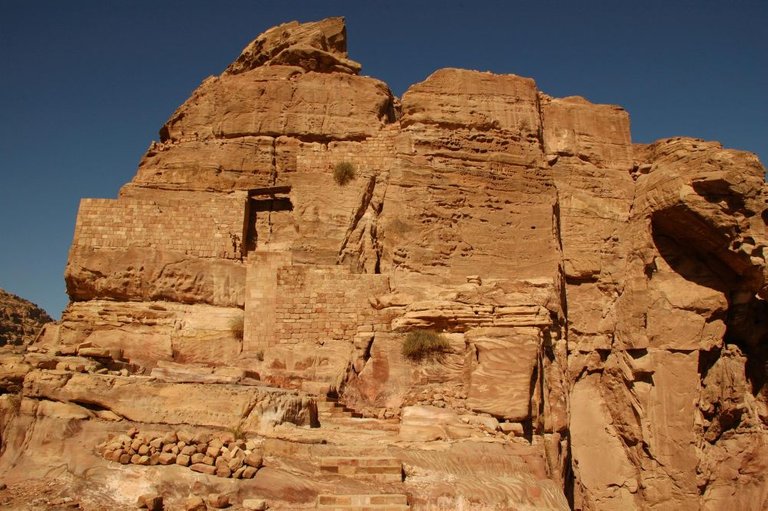
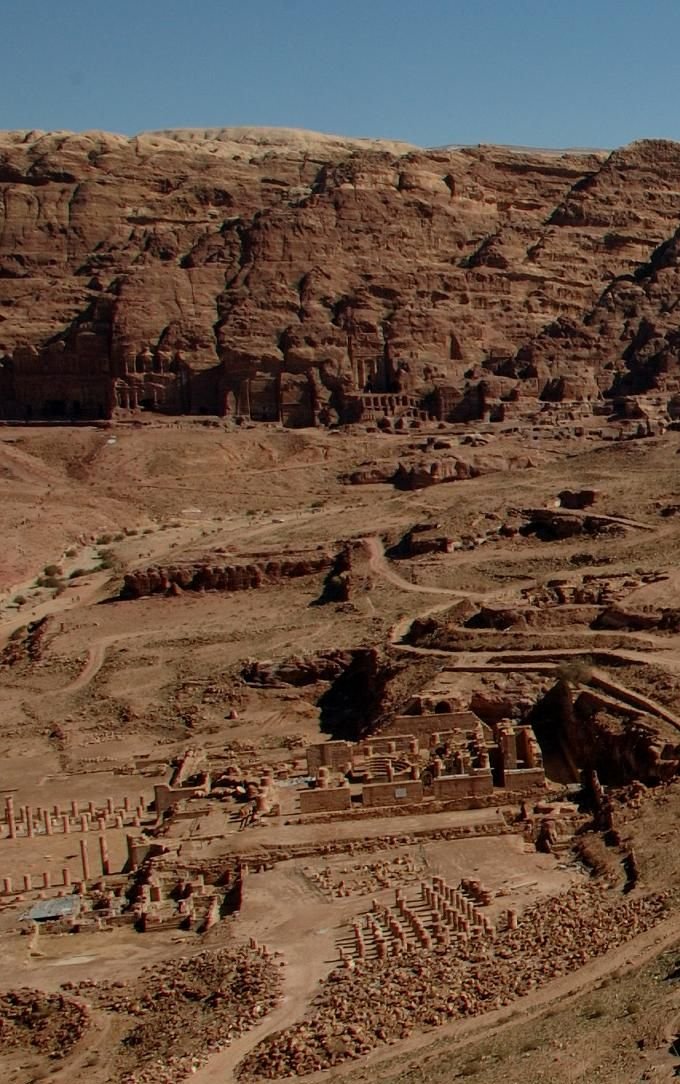
We continue our journey along Petra after enjoying an expensive super duper sandwich and a bar of chocolate. We have no choice but to buy with a grumbling mouth. Petra is already very commercial. Around this place we also met with a group of travelers who took the bus together from Amman yesterday. So we went together to "El Deir" or "The Monastery" which became our last destination in Petra. The journey here is a bit difficult because they have to climb steep cliffs for one and a half hours. But, this trip is worth a try because there are many spectacular views along the way. Rocks with unique shapes make me always stop to take photos.
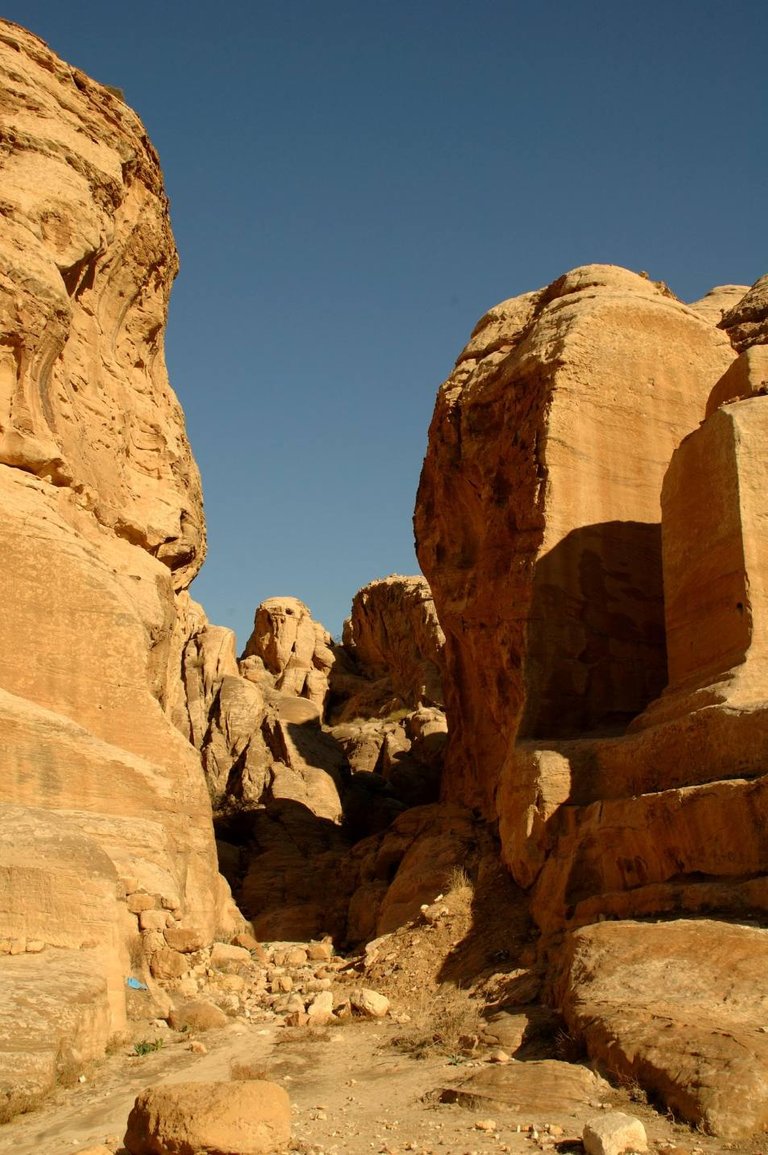
"El Deir" or "The Monastery" is the only building in the area and is also the largest building ever carved on stone in Petra. This magnificent building was made in the first century. In the hilly area not far from "El Deir", there is a Jordanian army post. From one of the hills, the Jordan-Israel border in the form of a vast expanse of desert can be seen. Another interesting thing here is the "Sacrafice Altar". It seems like the ancient Nabataeans still adhered to a religion that sacrificed humans. This is a characteristic of ancient religions worshiping Baal, one of which is a ritual offering human sacrifice. As a native of the Canaanites (Israel, Palestine, and surrounding Jordan), it's no wonder that the Nabataeans are one of its adherents.
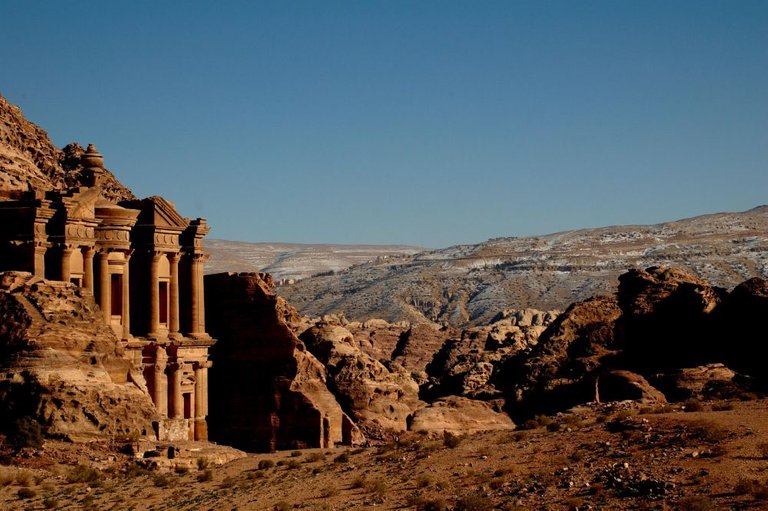
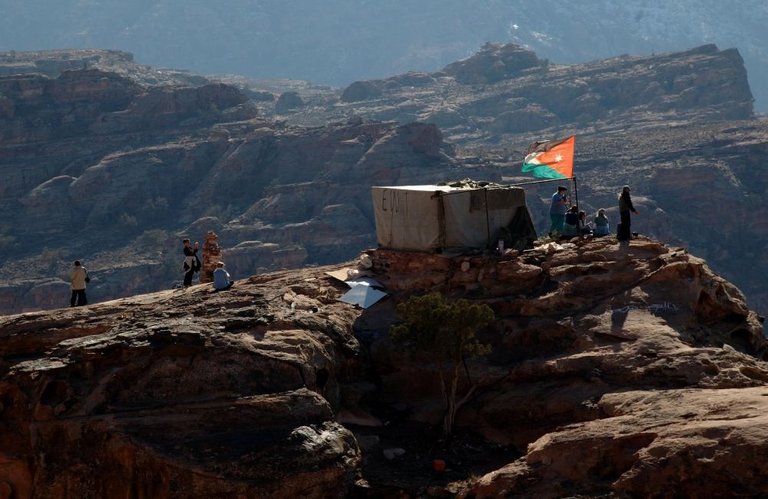
Eouin and I accidentally met with our friend one other lodging, Jean Paul in "El Deir". He suggested we go down before sunset because this area would be very cold. We did not bring enough equipment to withstand the winter weather at Petra. Me, Jean Paul and Eouin then went down together after almost an hour here. There is a certain satisfaction in being able to go down Petra to "El Deir" in a day that most people do in two days. Eouin and I felt that the journey we did in Petra was like a journey back to the traders in this area thousands of years ago. The earthquake and erosion did erode Petra little by little, but this place still shows its magic. Hopefully Petra can still survive thousands of years into the future. Hopefully….
Great travel report on a very interesting place. The photos are amazing... Just too bad Petra is also known as a place where animal abuse happens on daily basis as those poor donkeys have to carry tourists (often overweight) up there in the unbearable heat... But this post is great and I am happy to support it as @ritxi nominated it to my last upvote giveaway.
Thanx for the info about animal abuse, I didnt know about that.
Congratulations @douglasyukanov! You have completed the following achievement on the Hive blockchain and have been rewarded with new badge(s) :
You can view your badges on your board And compare to others on the Ranking
If you no longer want to receive notifications, reply to this comment with the word
STOPTo support your work, I also upvoted your post!
Support the HiveBuzz project. Vote for our proposal!
Wow, amazing place and also amazing photos!